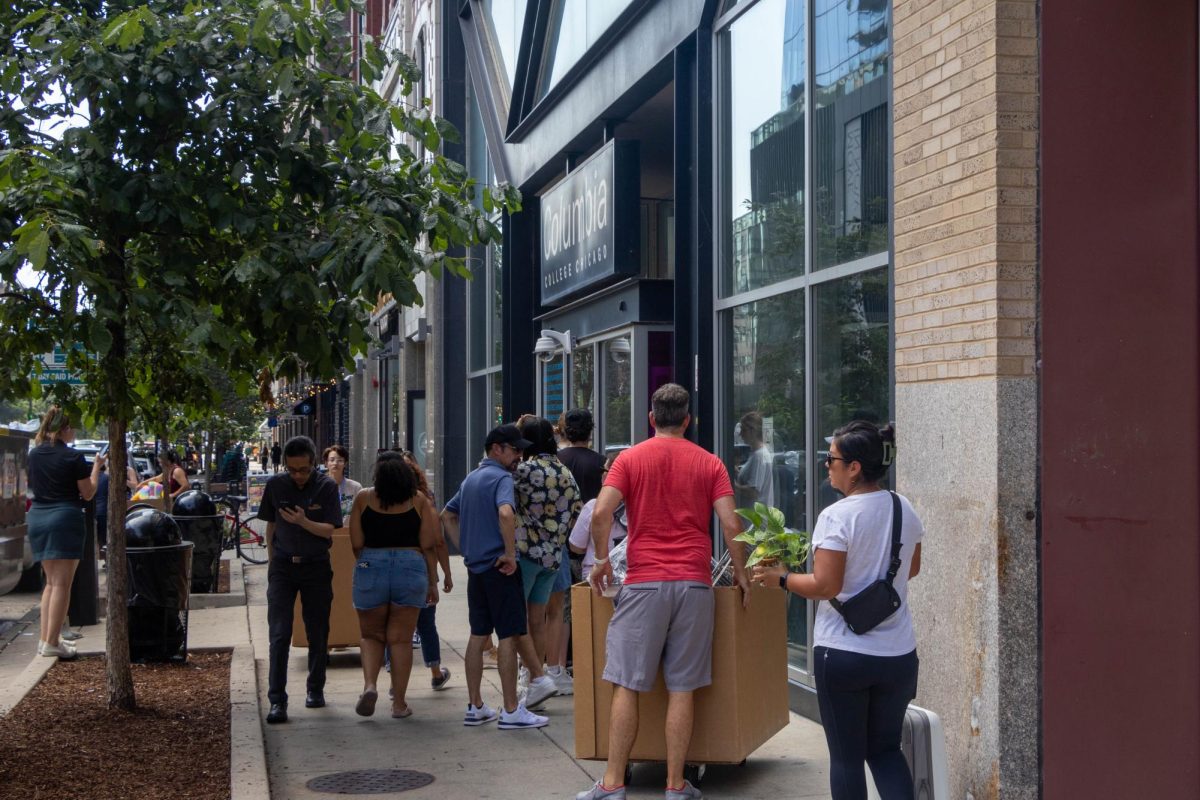Columbia’s Housing and Residential Experience office changed the way students moved into the dorms this semester in an effort to reduce congestion around the doors and elevators.
The office spread out the time slots for assigned move-ins to reduce the number of students and families trying to move in at the same time. It also offered move-in packets with information about the specific dorm buildings, including how to connect to Wi-fi and where to put trash.
Michelle Hunter Lancaster, director of housing and residential experience, said the goal was to make the move-in process “quicker and easier for students and families.”
Students began moving their belongings into the dorms this week, ahead of the start of the fall semester after Labor Day.
Each year, the Housing and Residential Experience staff review what went well the previous year and what may need to be improved. This year, they also distributed move-in packets, a new addition.
The move-in packets contained information about the specific dorm buildings, including how to connect to Wi-fi and where to put trash.
Gabrielle Easterly, a junior theatre technology and design major, said the process of move-in for her this week was “much smoother than previous years.”
“Columbia housing was very attentive this year and seemed to really all be on the same page,” Easterly said. “I enjoyed the move-in process significantly more than previous years.”
Junior transfer Amelia LaRocca, a film and television production major, said she enjoyed the reduced crowd during move-in. She noticed this year that the elevators were not backed up.
Move-in time slots began at the start of the day on Monday, Aug. 26 and ran until Thursday, Aug. 29. There are very few time slots available on Friday, Aug. 30 due to New Student Convocation. Move-in will resume over the weekend.
Only students living in 30 East and The Arc were “eligible to select an Express Move-In time on Friday, August 30, as Convocation does not typically apply to them, and we wanted to allow for additional flexibility for those folks,” Lancaster said.
The Dwight is only available to first-year and transfer students, while the rest of the dorms are open to all students.
Due to the drop in enrollment for the 2024-2025 school year, Lancaster said the number of students living on campus compared to last year “dipped a little bit.”
The college is no longer using The Flats, a 17-story dorm owned by East-West University that was added last year as an on-campus housing option.
Gabby Mitchell, a junior music business major, moved back onto campus for her third year in student housing. While she had a “well thought out plan” on what to expect moving in, she said the process this year felt smoother and not like a “rushed assembly line.”
“The past two years, I felt rushed and like I couldn’t have my questions answered,” Mitchell said. “But this year, the staff running it were very helpful, and I didn’t feel stupid with any concerns or issues I had.”
Students were allowed to bring three people to help assist them during their move-in and could borrow the cardboard moving carts the dorms provide to help assist in a smoother process from their car to their new room.
Lancaster said returning RA’s who have assisted with move-ins during previous years have “also enjoyed the ease of this year” with the spaced-out time slots that helped reduce congestion in the buildings.
While some students felt the process was easier, EmmaJane Bauer, a sophomore photojournalism major, said their move-in process was “more chaotic” than last year because 30 East was given fewer days to move in.
The Arc and 30 East had fewer slots than The Dwight and The University Center because they are smaller dorms, according to Lancaster.
Bauer said move-in is “overall still a good system” but thinks bringing back more move-in days would help the process.
For Mitchell, the smoother and more relaxed move-in process made her “really love my experience at the Arc and feeling comfortable in the space I am in.”
Copy edited by Vanessa Orozco










